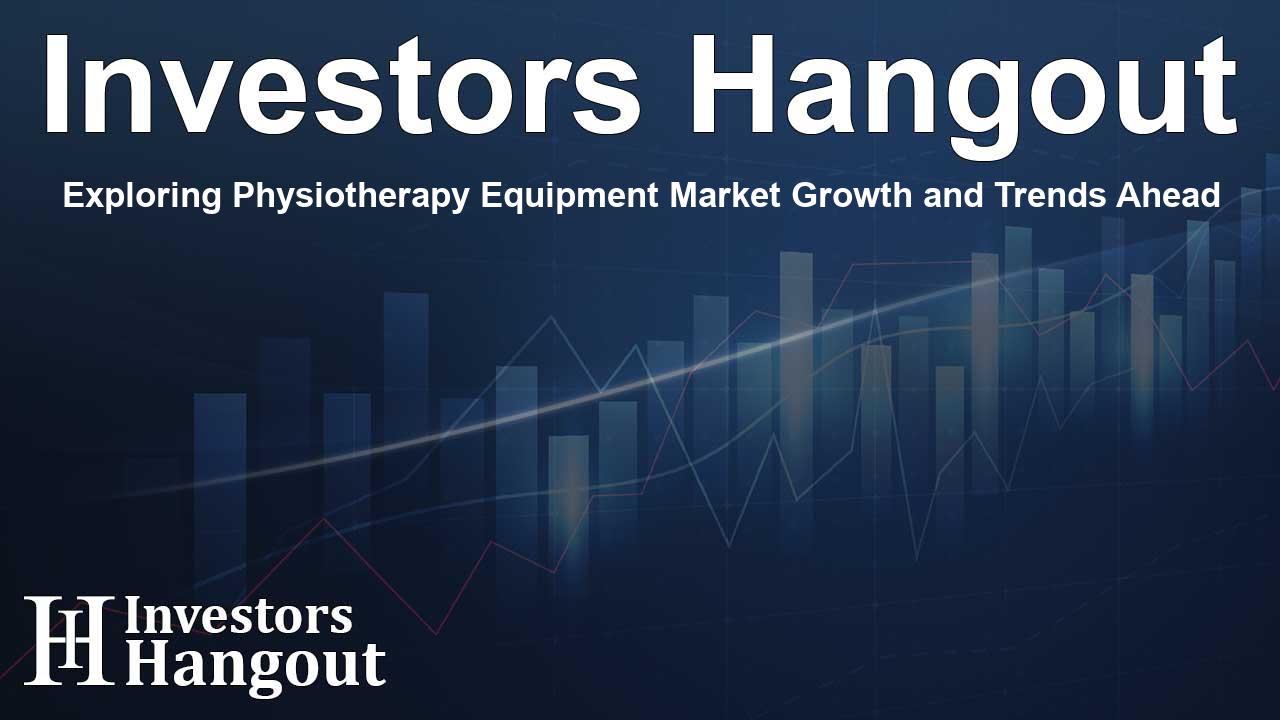Exploring Physiotherapy Equipment Market Growth and Trends Ahead

Physiotherapy Equipment Market Growth Insights
The global physiotherapy equipment market is positioned for significant expansion, currently valued at USD 20.9 billion in 2023 and is set to reach USD 38.2 billion by 2032. This growth trajectory, validated by a projected compound annual growth rate (CAGR) of 6.9%, is mainly fueled by several key factors.
Key Drivers of Market Expansion
The increasing prevalence of musculoskeletal disorders is one of the primary drivers behind the growth in the physiotherapy equipment sector. With the aging population and a rise in chronic health conditions, there is a greater need for effective rehabilitation solutions. Globally, the World Health Organization notes that 1.71 billion people suffer from musculoskeletal ailments, underscoring the demand for advanced therapeutic equipment that enhances recovery and mobility.
Technological Advancements Reshaping Physiotherapy
Innovation plays a crucial role in this sector's growth. The introduction of advanced devices, such as AI-integrated systems and wearable sensors, has transformed the landscape of treatment. For instance, robotic exoskeletons enable personalized rehabilitation plans, significantly improving patient outcomes. Furthermore, the regulatory environment has favored these advancements. In 2023, the U.S. FDA approved numerous digital health devices, bolstering market dynamics.
Government Initiatives Supporting Growth
Government initiatives and funding are vital for promoting the development of physiotherapy equipment. Programs like India's Production Linked Incentive scheme aim to enhance local production and reduce dependence on imports. This initiative signifies a commitment to boost the healthcare sector's efficiency.
Market Segmentation and Applications
The physiotherapy equipment market is segmented by application, end-use, type, and demographics. The musculoskeletal application held a dominant share, accounting for 59% of revenue in 2023. This is largely attributable to rising cases of arthritis and other related conditions that demand effective rehabilitation.
End-Use Segmentation
In the end-use sector, hospitals and clinics represent a primary revenue source, contributing over 43% to total earnings. This dominance stems from their access to advanced equipment and skilled personnel necessary for comprehensive patient care.
Regional Insights and Competitive Landscape
North America continues to be the leading region in the physiotherapy equipment market, capturing 39% of the global share in 2023. The high level of healthcare spending and robust infrastructure contributes to this dominance. The profound prevalence of chronic pain, affecting about 23% of adults in the U.S., drives a demand for physiotherapy services as a fundamental part of pain management programs.
Emerging Markets
The Asia-Pacific region is notable for its rapid growth, boasting the highest CAGR in the physiotherapy equipment market. Factors such as a large population base and improving healthcare systems in countries like China propel this growth. By 2030, nearly 18% of China's population is anticipated to be elderly, amplifying the need for effective rehabilitation services.
Key Players in the Market
Within this expanding market, several key players have emerged, including:
- Enovis Corp., known for its DonJoy Defiance Knee Brace and LiteCure Medical Laser Therapy.
- BTL Industries, which offers products like the BTL-6000 Series Electrotherapy systems.
- Performance Health, recognized for TheraBand Resistance Bands and Biofreeze Pain Relief Gel.
- ITO Co., Ltd., providing ultrasound and electrical stimulators.
- Dynatronics Corporation, offering a range of therapeutic devices.
Recent Developments in Physiotherapy Equipment
Innovation in the physiotherapy sector is ongoing. For instance, Richmar introduced the REX Four-Tiered Sequential Leg Compression System in May 2024, designed to enhance circulation and recovery. Such developments reflect the industry's commitment to improving treatment modalities.
Frequently Asked Questions
What is the current size of the physiotherapy equipment market?
The physiotherapy equipment market is valued at USD 20.9 billion in 2023.
What factors contribute to the growth of the physiotherapy equipment market?
Major factors include an aging population, rise in musculoskeletal disorders, and advancements in technology.
Which regions lead the physiotherapy equipment market?
North America leads the market with significant shares, followed by rapid growth in the Asia-Pacific region.
What are the key players in this market?
Prominent players include Enovis Corp., BTL Industries, Performance Health, and Dynatronics Corporation.
What technological innovations are driving change?
Innovations like AI-integrated devices, robotic exoskeletons, and mobile ultrasound systems are shaping the market's future.
About The Author
Contact Addison Perry privately here. Or send an email with ATTN: Addison Perry as the subject to contact@investorshangout.com.
About Investors Hangout
Investors Hangout is a leading online stock forum for financial discussion and learning, offering a wide range of free tools and resources. It draws in traders of all levels, who exchange market knowledge, investigate trading tactics, and keep an eye on industry developments in real time. Featuring financial articles, stock message boards, quotes, charts, company profiles, and live news updates. Through cooperative learning and a wealth of informational resources, it helps users from novices creating their first portfolios to experts honing their techniques. Join Investors Hangout today: https://investorshangout.com/
The content of this article is based on factual, publicly available information and does not represent legal, financial, or investment advice. Investors Hangout does not offer financial advice, and the author is not a licensed financial advisor. Consult a qualified advisor before making any financial or investment decisions based on this article. This article should not be considered advice to purchase, sell, or hold any securities or other investments. If any of the material provided here is inaccurate, please contact us for corrections.
